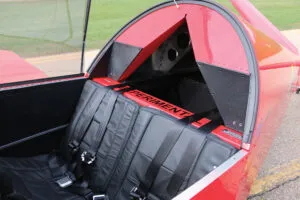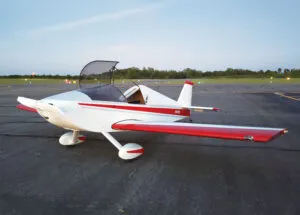The word that comes up most often when talking to Sonex owners is “fun.” Designed as a recreational flyer, the two-seat Sonex is easy to transition to and simple to handle, while still leaving room for pilots who want a bit of adventure. It’s a fast-slow aircraft, offering good cruise performance and a low stall speed. As a bonus, a conforming Sonex will qualify as a Light Sport Aircraft (LSA).
With more than 1600 Sonex kits shipped since the aircraft was introduced in 1998, there are almost always a few to be found on the used aircraft market. Given the number of engine options and a significant cockpit change along the way, potential buyers will want to have a good idea of what they’re looking for from their new plane before starting the search.
History
The Sonex got its start when aircraft designer John Monnett was asked to modify his two-place Sonerai design to fit the European microlight category. Working with mechanical engineer, A&P and fellow pilot Pete Buck—who had also worked with Monnett on the Sonerai design—he decided that modifying the Sonerai would be about as complicated as designing an entirely new aircraft. The choice was made to come up with a clean-sheet design.
The result, which took some inspiration from Monnett’s world-record-winning Monex racer, was the Sonex. On February 28, 1998, Monnett took Sonex serial number 1 (SX1) for its first flight at Wittman Regional Airport in Oshkosh, Wisconsin. He founded Sonex Aircraft, LLC the same year.
Other than the Waiex model discussed in the sidebar, the Sonex design remained pretty much the same until Sonex Aircraft introduced the Sonex-B in 2016. The B-Model offered a larger cockpit, more engine options and a bigger fuel tank. While plans for the legacy Sonex are still available for scratch building, the company currently only sells B-Model kits.
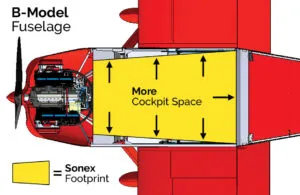
Design
The low-wing Sonex features all-aluminum construction and side-by-side seats. It’s on the small side, running 18 feet 1 inch long with a wingspan of 22 feet. The cockpit of the original Sonex is tapered, measuring 40 inches at its widest point.
With the Sonex-B, the aircraft itself didn’t get any larger, but the B-Model got rid of the taper in the forward fuselage, making the width of the entire cockpit 40 inches. The change also increased the size of the panel and firewall, making room for some new engine choices and a larger fuel tank. Electric flaps and dual throttles are standard with the Sonex-B, and a center “Y-stick” option is available. Sonex Aircraft does offer B-Model conversion kits for legacy Sonexes.
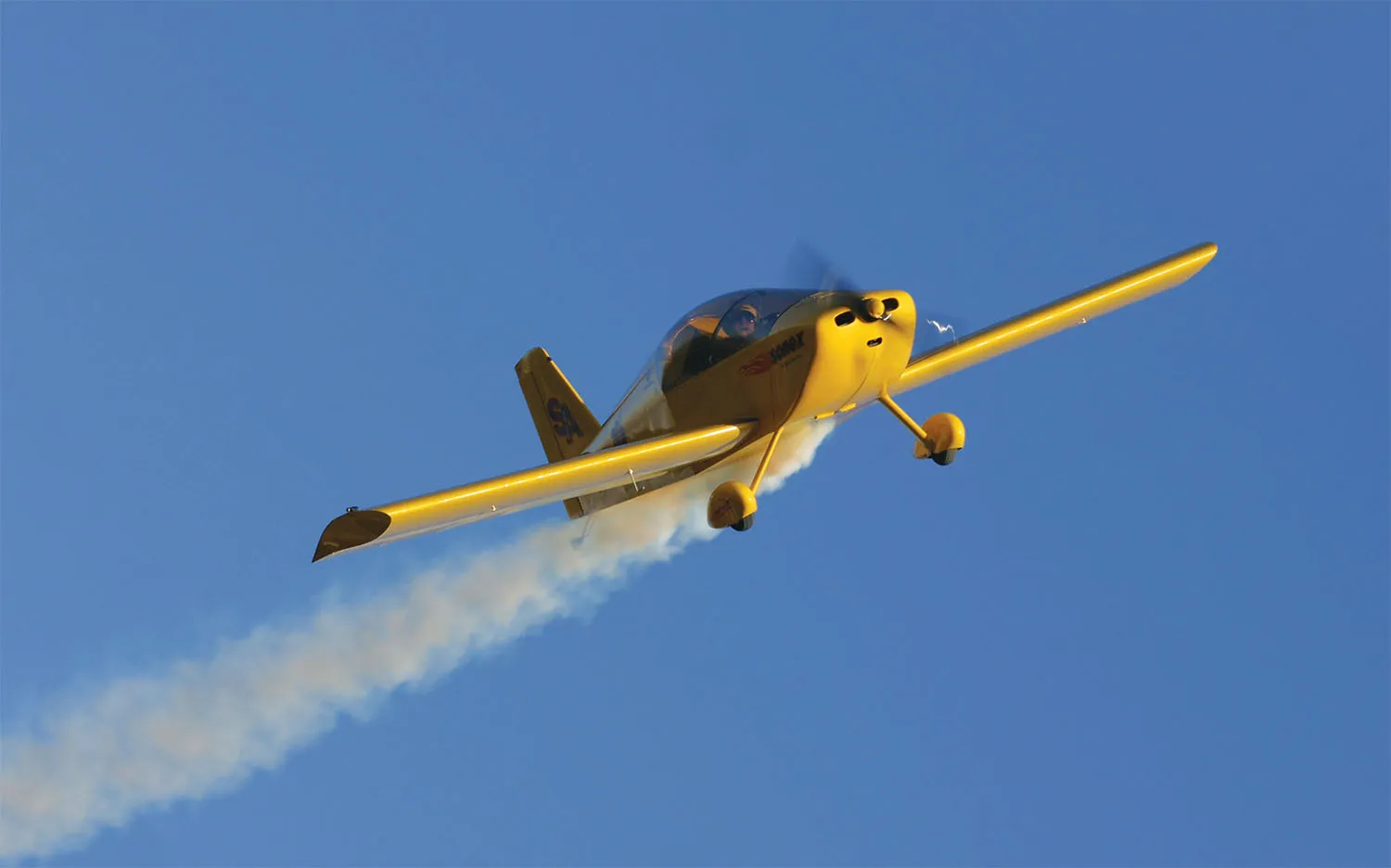
Performance
Depending on the engine installed, the Sonex will cruise between 130 and 170 mph. With full flaps the aircraft typically stalls at around 40 mph. The legacy Sonex has a 16-gallon fuel tank, while the Sonex-B has a 20-gallon tank. The extra four gallons the B-Model can carry gives it a range of 687 miles, about 130 miles more than the original Sonex. Useful load generally falls between 480 and 530 pounds.
To add to the fun, the Sonex is approved for aerobatics when flown at 950 pounds gross weight or under. It can take a load factor of +6.0/-3.0 G’s, allowing for some fancy maneuvers under the right circumstances. However, the neutral stability that makes it a nice aerobat makes it a poor platform for IFR operations. It can’t really be trimmed for hands-off level flight, so buyers looking to traverse the soup should explore other options.
Sonex models can be found with either standard or tricycle gear. Those equipped with tricycle gear are typically 4–6 mph slower and 10–12 pounds heavier than a similarly equipped taildragger. Buyers who have backcountry exploration in mind should note that the company does not recommend the tricycle gear configuration for use on exceptionally rough fields.

Engines and Avionics
The original Sonex model was designed to use the 80-hp AeroConversions AeroVee engine, which can be run on 100LL or auto fuel. A turbocharged version, the 100-hp AeroVee Turbo, is also an option. In addition, the legacy Sonex can be equipped with the 80-hp Jabiru 2200, and the 120-hp Jabiru 3300 engine is a popular choice for builders looking for a bit more power. Both Jabiru engines can run on avgas or auto fuel.
All of those engines are also frequently used for the Sonex-B. However, the B-model can also be equipped with ULPower 260 and 350 series engines. The 260 series offers between 97 and 107 hp, while the 350 series produces between 118 and 130 hp. Both ULPower engines offer a fully electronic ignition and multi-point fuel injection (FADEC) system. Like other popular Sonex engines, the ULPower options can also run on either avgas or auto fuel. More recently, Sonex Aircraft began offering Sonex-B engine mount options for Rotax 912 Series engines.
In terms of panel configurations, glass is common in the Sonex and Sonex-B. Sonex Aircraft is a third-party provider for MGL Avionics, which has resulted in a lot of its aircraft being outfitted with MGL instrumentation such as the company’s Blaze ASV-2 primary flight instrument, iEFIS Discovery Lite or iEFIS Explorer. Dynon, particularly the SkyView Classic, is another typical avionics choice for both the Sonex and Sonex-B.
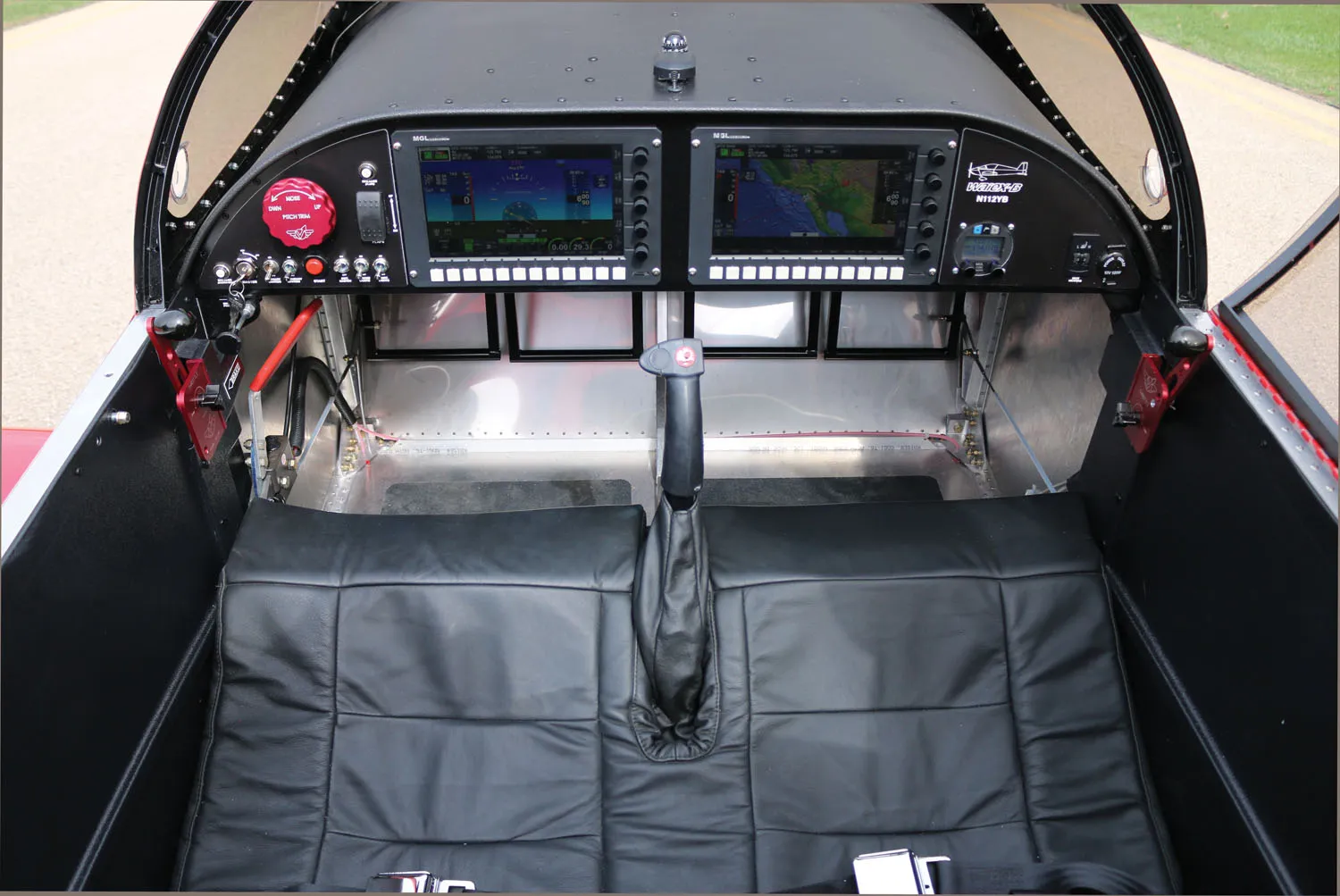
Common Modifications
There are a number of modifications that crop up in the Sonex. It’s not unheard of to find extra fuel tanks in wings, differential brakes or a full-swivel tailwheel. Some builders will install a tilt-back canopy instead of the standard piano hinge setup. The tilt-back canopy can add weight, complexity and drag, as well as a gas strut that encroaches on the cockpit. Engines larger than 130 hp, along with engine types not approved by the company, also show up on occasion. None of the above-mentioned modifications are approved by Sonex Aircraft, which can become important if the new buyer is interested in the company’s owner support options.
Of particular note for buyers, the legacy Sonex typically has a single or dual stick with the throttle, flaps, brakes and mixture located on the left. One approved version moves all of those controls to the middle of the airplane. A modification flagged as dangerous by the company moves the throttle and mixture to the middle but leaves the flaps and brakes on the left-hand panel.
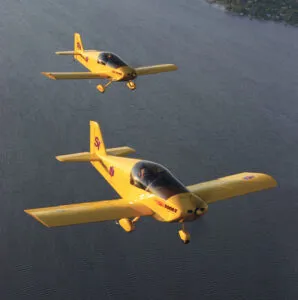
What To Look For
As with any used homebuilt, a buyer interested in purchasing a used Sonex should keep their eyes open for a tidily constructed plane that’s logged a reasonable amount of flying time. With a few years under its wings, most of the bugs should have been identified and addressed, and the aircraft will have proven itself reliable. Ideally, look for something with as few modifications to the basic design as possible.
In order to ensure that performance matches expectations, the aircraft should have an approved engine and a licensed empty weight in the normal range—anything above 690 pounds would be considered heavy. Similarly, the aircraft’s gross weight should be below 1150 pounds if equipped with an engine producing 100 hp or greater or 1100 pounds if the installed engine produces less than 100 hp. A Sonex with a licensed gross weight above those thresholds will be disqualified from the Light Sport category.
Potential buyers should also make sure all applicable service bulletins have been complied with for the model they’re considering. Sonex keeps a list of service bulletins related to its aircraft at www.sonexaircraft.com/service-bulletins. Check on service bulletins specific to the installed engine as well.
A used Sonex with low hours but multiple owners should throw up a red flag for a potential buyer. The combination is often a sign that there’s an issue no one has been able to figure out or wants to deal with.
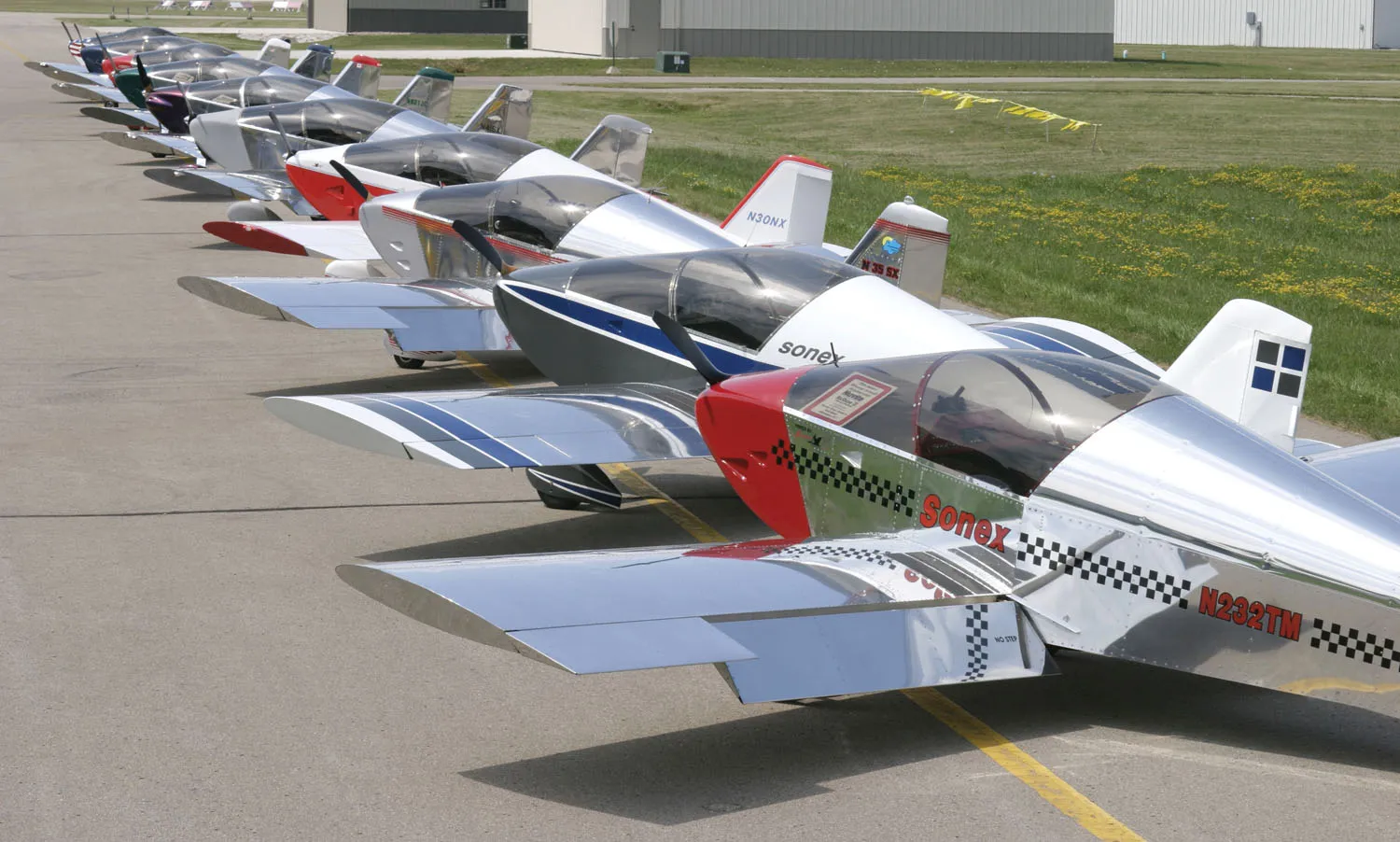
Owner Support
Sonex Aircraft offers a transfer program for used Sonex and Waiex buyers, which gives new owners access to tech support and parts. To be eligible for the transfer, the company requires that the seller notify them of the sale. The new owner will then need to sign a liability agreement and pay a $100 transfer fee. This is another spot where design modifications might get a secondhand owner into trouble—the company does not support unapproved modifications.
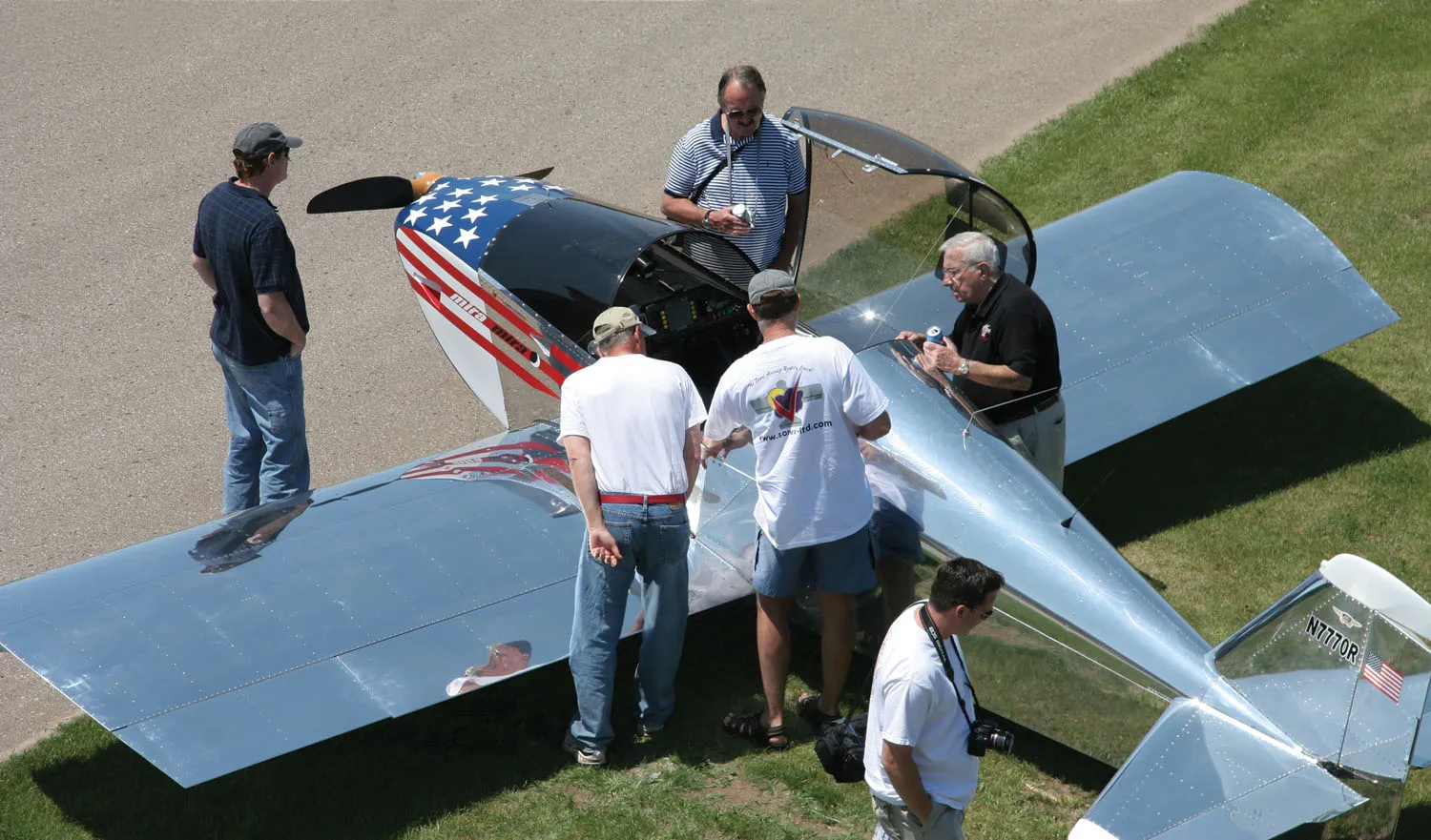
Value
Given the relative newness of the Sonex-B, the vast majority of Sonex aircraft on the used market will be legacy models. A flying legacy Sonex typically sells for between $17,000 and $30,000. A used Sonex-B is likely to be priced at around $20,000 to $33,000.
Conclusion
At its heart, the Sonex is a simple aircraft that excels at its job: creating a rewarding, entertaining experience in the air. Whether it’s taking an afternoon cruise around the local airfield or putting some polish on an airshow performance, the Sonex has a little something for everyone. The good news is that Sonex Aircraft is looking to keep it that way. The company says it has no plans to pursue any major changes to the design.
Waiex
The Y-tail on Sonex Aircraft’s Waiex is actually the original design intended for the Sonex. However, it was believed that a standard tail configuration would find better market acceptance. Other than the tail, the aircraft are essentially identical—performance, flight characteristics and specifications are all the same.
The first Waiex kit shipped in 2004. Unlike the Sonex, it was never offered as a plans-built aircraft. The Waiex-B model was introduced in 2016 alongside the Sonex-B with the same design changes.
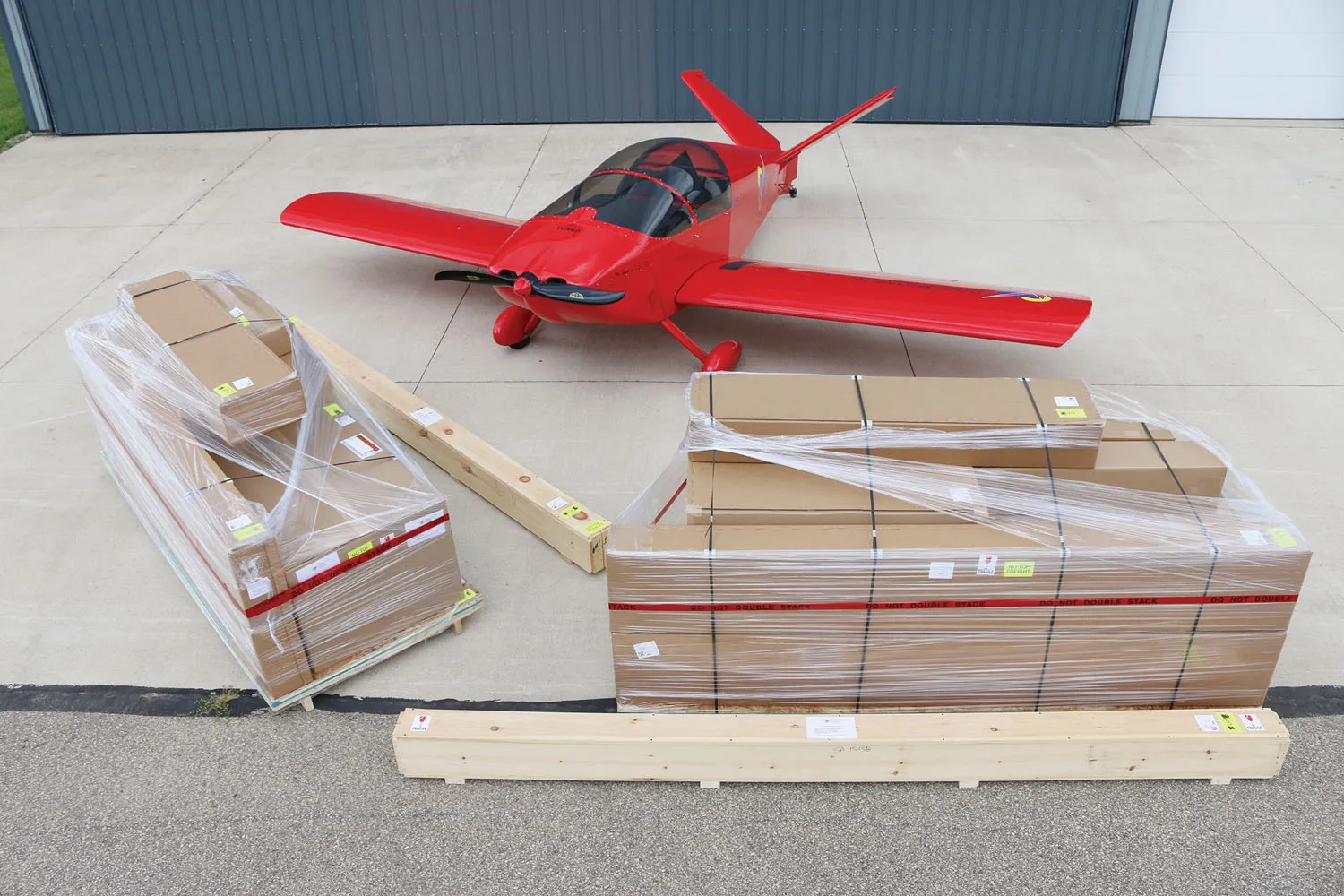
When looking at a used Waiex, it’s worth noting that there are three service bulletins specific to the model that a potential owner should check on. One involves adding an additional structural component to the aft tail spar. The second calls for an inspection to look for an improperly swaged rudder cable, which, if found, will require replacement. The last service bulletin pertains to possible cracking of the tail post channel and confirmation that the proper extruded rudder hinge was installed.
—K.O.
Owner Feedback
Andrew and Rosemary Pearce
I could write a screenplay about our little Sonex, Matilda. Instead, here are some random points on the topic. No one cares if you taxi up in your Cessna, but if you appear in a Sonex, people come out and take pictures—as they should. I like flying a Cessna, but our Jabiru 3300 powered plane still makes me giggle like a schoolgirl, just in the pattern. Unlike a Cessna, the uncertified engine is likely a little unique, and you’ll need to understand fuel and powerplant systems in your machine. People are scared of tailwheels, but it is the easiest tailwheel you will ever fly. It is almost cheating. Lastly, have someone with Sonex experience look over any used one before you commit. Pick a good airframe that has been cared for. Don’t ask me about mine though. It is not for sale and you can’t have it.
Greg McCarthy
The speed range of a Sonex is nothing short of amazing. It is extremely hard to provoke a stall, even with no flaps out. I have slowed mine down to way less than 35 knots, and it was only just starting to bob its nose a little. Mine easily exceeds 140 knots at the top end and will happily cruise at 120 knots all day. I have seen 300 km/hr (160 knots) a couple of times, which is not too far short of the Vne—but only in nice, stable air, of course. If you can get a Sonex with the Jabiru 3300 or the turbocharged AeroVee, that is by far the best. They are still very good with the smaller engines, but just superb with 120 hp on tap. The aircraft is amazingly agile, very stable except in extreme turbulence and will easily do simple aerobatics (if you are appropriately registered, licensed and have the correct weight and balance).
If you buy a Sonex, it will bring you into an amazing community. All the Sonex team (John, Betty, Kerry, Mark, Heather and others) have been fantastic, and the level of support you’ll get from the factory and other builders/owners is first rate.
The last piece of advice is always to get the aircraft checked out properly by a qualified mechanic (a LAME in Australia) before you buy it. It is essential to check cylinder compressions, electrical integrity, fuel system functionality and airframe/flight control integrity—especially any existing or incipient corrosion. Generally, there are no corrosion problems with aircraft from cooler climates, but an aircraft like mine from warm, coastal, salty environments (I live within a stone’s throw of the ocean in Southern Australia) should at least have a minimum of priming between all mating surfaces and preferably corrosion treatment on all internals and joints.
Mike Farley
First flown with the AeroVee VW-based engine, I now have over 350 hours of flight time in my Waiex, including multiple trips to EAA AirVenture. With the AeroVee engine, I would plan a cruise speed of 125 mph while burning 4.5 gallons per hour and always matched or beat those numbers. Recently, in a quest to obtain maximum performance for increased cross-country capability, I swapped to the Jabiru 3300 engine, which provides me with a 150-mph cruise speed while burning 5.5 gallons per hour. Both engine choices offer Sonex owners excellent efficiency and super-low hourly operating costs.
While I feel the airplane is easy to fly and suitable for a low-time pilot with minimal transition training, I think the word that best describes the handling qualities of the Sonex is “fun!” As a corporate pilot and longtime CFI, I’ve flown both Sonex and Waiex versions in both conventional and tricycle gear, and I love the sporty handling qualities the entire Sonex line offers. The controls are light and responsive without being twitchy or unstable. This is an airplane perfectly suited for those pilots who enjoy local pleasure flights, gentleman’s aerobatics and occasional cross-country trips. In an effort to keep my Waiex as light and inexpensive as practical, I equipped it for VFR flight and polished the majority of the airframe, which gives me a useful load of nearly 500 pounds. I routinely get asked if my Waiex experiences any Bonanza-like Dutch roll, of which I’ve never experienced. And, having flown both, I am pleased to report that the Y-tailed Waiex and conventional tailed Sonex both have an identical control feel in cruise.
Maintaining a flying Sonex airframe is about as simple as it gets. With stainless steel pulled-rivet construction and simple systems, regular maintenance consists of oil and filter changes, head torque and valve checks if you have a VW-based engine, and occasional tire and brake replacement. These are dirt simple, efficient and fun airplanes!
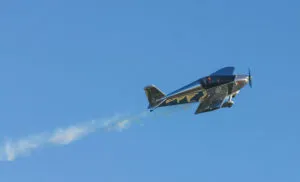
Kerry Fores
With 500 hours of Sonex flight time in my logbook, including aerobatics and cross-countries of 1200 miles in a day, my Sonex only ever surprised me in good ways. Transitioning to a tailwheel Sonex from the world of Cessna trainers—where I had amassed 135 hours over the span of 20 years—was straightforward, and my first time alone in a low-wing taildragger controlled by a stick instead of a yoke was the first flight of my Sonex.
Describing the flight qualities of a Sonex is a conundrum. It was designed to fly slow, but it is also fast. It’s aerobatic and immediately responsive to control inputs, yet more docile in a stall than a Cessna 150. It was designed for local flights, but will efficiently swallow the miles between A and B no matter how many states separate them. I flight planned 150 mph at 5.2 gph with my Jabiru 3300-powered Sonex, flying as near 10,000 feet msl as my non-transponder equipped aircraft and flight direction allowed. My local flights usually included low-level sightseeing and spirited aerobatics and would often last three hours. At the end of the flight, I’d pump 12 gallons of 100LL into the tank and be ready for the next flight, which sometimes occurred after the fuel truck departed. As with any homebuilt, enjoying the performance and flight characteristics intended by the Sonex Aircraft design team depends on finding one that has been built faithfully to the plans.
Though Kerry has worked for Sonex Aircraft since 2004, his Sonex experience began as a customer in 1998.
Aaron Knight
While getting my pilot’s license in 2006, I realized I wanted a much sportier, aerobatic plane than the Piper Warriors I trained in. The Sonex fit the bill as a 6G rated, low-wing, fast-cruising, kitbuilt plane. Since mine is hangared right on the salty-air coastline, extra effort went into zinc-oxide coating all surfaces of all the parts, and it has a professional paint job.
Twelve years later, I have traveled nearly 1000 hours in the Sonex from the Boston area where I’m based out to the Grand Canyon, Oklahoma and the Southwest, Niagara, Canada, the Rockies, Yukon, Alaska, Denali, the Bahamas numerous times, the Turks and Caicos Islands, and many other destinations up and down the East Coast and New England. It has proven the ultimate adventure mobile, as well as a smoke-trail-spewing, thrilling, aerobatic yank-and-banker.
The Sonex is very snug for two grown men, yet roomy as a solo plane or for trips with a medium- to small-sized woman or one of the kids. Maintenance has been straightforward and simple, and the tank-like spar, airframe and landing gear design have proven unbreakable and reliable. The Dynon glass panel and chameleon color-change metallic copper paint job round it out as one of the coolest eye-catchers on the tarmac!
Photos: Courtesy of Mark Schaible, Sonex Aircraft and the builders.
This article originally appeared in the June 2021 issue of KITPLANES magazine.
For more great content like this, subscribe to KITPLANES!



































